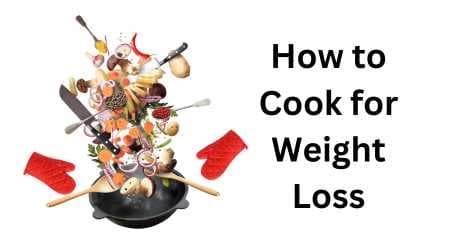
Many people across America have tried to lose weight. Statistics from a poll showed that 95% of Americans have tried losing weight within the last five years. But weight loss can be a struggle, as 44% noted that they gained 21 pounds or more instead. Most are hindered by weight loss challenges, including the lack of willpower, the ability to eat healthy foods, or difficulty overcoming hunger. But despite these predicaments, as much as 73% of people are keeping weight loss a priority for themselves in 2023. Diet is often the main culprit of weight gain, so people need to know healthy ways to modify their diet and see results. In most cases, cooking at home is one of the best ways to lose weight.
Why is it better to cook for yourself?
Cooking for yourself at home has plenty of benefits, including those beyond weight loss. Buying outside food costs more than getting the ingredients and preparing them yourself. Given rising food prices, it is a better decision to cook at home instead.
Another benefit when cooking for yourself is you have greater control over what you include and how you serve your meals, which is a fantastic way to keep your motivation for weight loss. As shared by one study in the Journal of the American Medical Association, the diet that’s best for you is the one you’re likely to stick with. So if you like bread, going keto or going carb-free isn’t your best match. Instead, follow a sustainable approach that lets you enjoy your favorite foods to ensure you can sustain cooking healthy meals. To help you get started, here are some tips and tricks on how to cook for weight loss.
Make ingredient additions and swaps
To lose weight, you must include more nutritious foods in your diet. However, this can be tricky when you’re eating out, as many restaurants and food services have limitations on what they can serve. For instance, a dish in a restaurant may only serve two types of vegetables with the main protein. But at home, you can add as many vegetables as you want.
When adding ingredients or making swaps, consider their nutritional value. For instance, opt for thinly sliced fresh fruit like pears, strawberries, or apples instead of having jelly for a peanut butter and jelly sandwich. These fruits add fiber to your sandwich, making it healthier than jelly. Similarly, you can swap out the mayonnaise in a tuna salad recipe with plain nonfat yogurt to minimize fat content.
Change the way you cook
If you’re deep-frying your meals, that’s no better than ordering take-out meals. Instead, look for cooking methods to create a healthier dish. Some methods include:
- Steaming – A delicate way of cooking food, which can best retain nutrients
- Air-frying – Resulting food mimics the texture of deep-frying with little to no oil
- Roasting – Minimizes the use of oil while giving food a caramelized flavor
- Grilling – Direct heat that cooks food quickly while minimizing the need for fat
While food like vegetables can be eaten raw, some cooking processes can make food more nutritious. Methods like boiling can cause vitamins and minerals to leech out into the water, with vegetables like spinach, broccoli, cauliflower, and kale highly benefit from light steaming to retain nutrients.
Control your sugar and fat content
When it comes to food cravings, most people crave sugary or salty foods. This is mainly due to the brain’s dopamine system, which gives people a rewarding feeling whenever they consume fatty or sugary food. However, these foods are often easy to overeat, leading to weight gain.
Since you’re cooking at home, it’s best to avoid consuming too much fat or added sugar. You can follow the cooking methods to avoid needing oil to cut down on fat and keep your meals lean. It also helps to choose recipes that don’t use a lot of white or brown sugar, honey, and similar sweeteners. If you still plan to make dessert, rely on ingredients that use natural sweetness, such as applesauce, bananas, or pumpkin purée.
By making an effort to cook at home, you can eat healthier meals that not only help with weight loss but can provide the essential nutrients to support your overall health. If you plan to enjoy the great outdoors soon, do read our guide on how you can cook outdoors with just a mess kit for tips on how to use outdoor equipment to recommended meals.
Why is it better to cook for yourself?
Cooking for yourself at home has plenty of benefits, including those beyond weight loss. Buying outside food costs more than getting the ingredients and preparing them yourself. Given rising food prices, it is a better decision to cook at home instead.
Another benefit when cooking for weight loss is you have greater control over what you include and how you serve your meals. Often, having a hefty serving of food on your plate may influence you to eat more than intended. By portioning your food beforehand, you can consume fewer calories while still feeling satisfied. And even if you’re not used to preparing meals at home, being able to practice can build confidence and make cooking for weight loss more manageable and less stressful. To help you get started, here are some tips and tricks on how to cook for weight loss.





